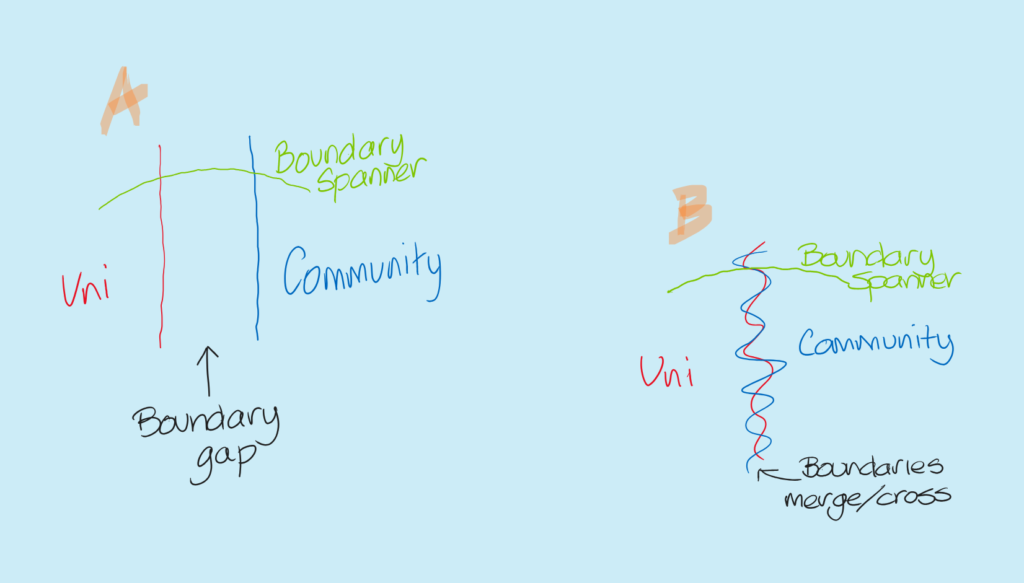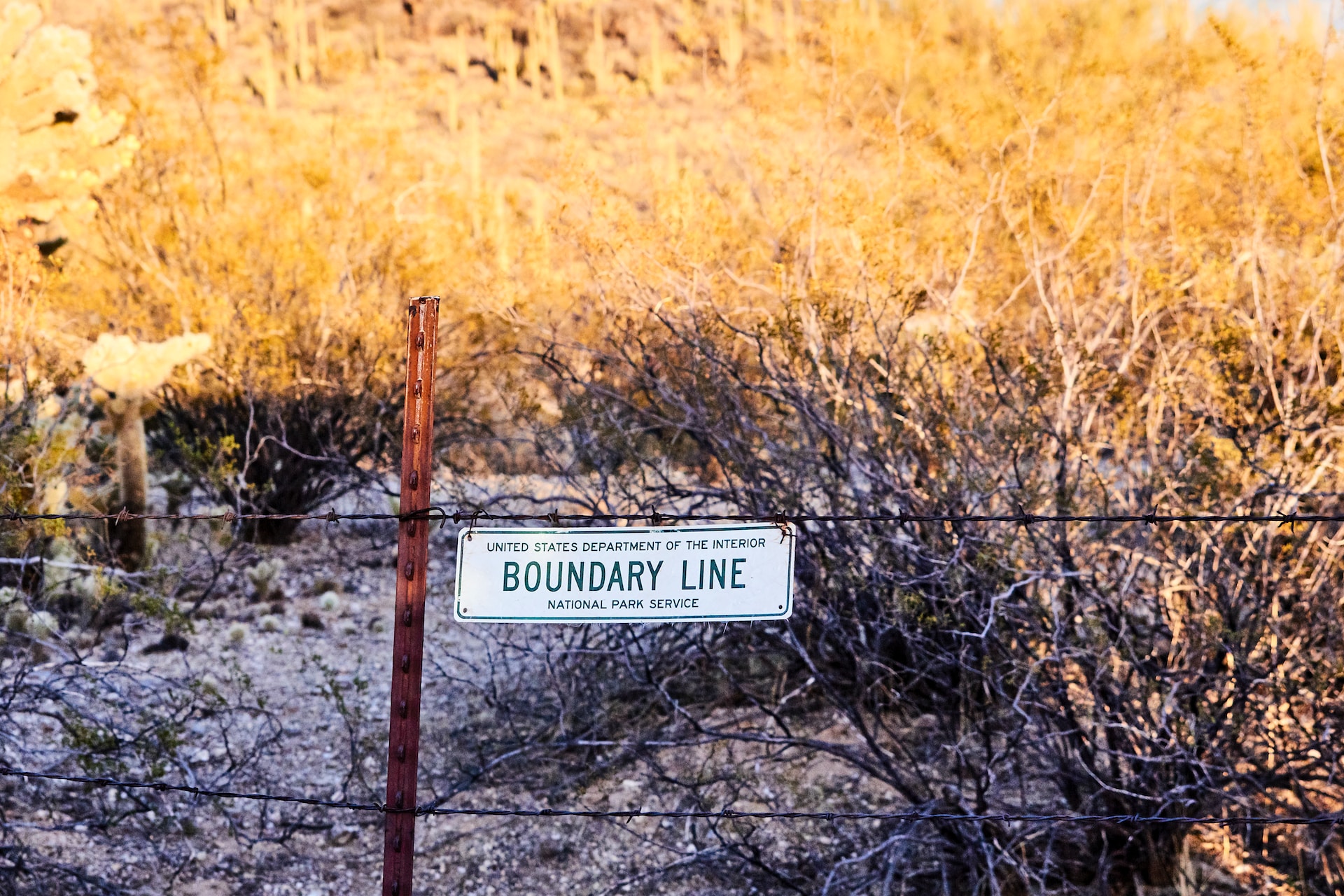Engagement, and the role of ‘boundary spanners’*, exists on some levels to close the gap between academia and community, and here I use community in its widest sense, any person or organisation working or involved with the university.
That gap, I believe, is a gap of knowledge and trust, caused by a difference in language and lack of understanding. It can also be cause by physical distance, by access (or not) to resources, by myriad things and circumstances.
A boundary spanner is there to ‘translate’, to facilitate, to share acquired knowledge from both sides, and to earn the trust of both sides in order to foster future collaborative exchanges or projects.
I was doodling while listening to a presentation earlier today (don’t judge, I’ve always done it and it helps me retain focus) and came up with this initial diagram. (side note: Microsoft whiteboard and surface pen is really good)

In diagram A there’s the obvious and aforementioned ‘gap’, but I was thinking about what is the aim of engagement … diagram B is an initial thought – are we aiming for those boundaries to merge, cross, become fuzzy.
What of the role of the boundary spanner? In A it’s quite obvious, but what about B?
I think in B it becomes less of translation and earning trust, and more about facilitating, enabling, and growing relationships and knowledge exchange. What happens after the trust is earned.
Anyway, random thoughts and doodles saved here for a reminder, and also for discussion should you wish.
*I really detest that term but it seems to be the accepted one unfortunately
